Claudin 7 (PT0731) mouse mAb
- Catalog Number : A130235
- Number :
-
Size:
Qty : - Price : Inquiry
Introduction
Specificity:This antibody detects endogenous levels of human Claudin 7. Heat-induced epitope retrieval (HIER) Citrate buffer of pH6.0 was highly recommended as antigen repair method in paraffin section.
Background:
claudin 7(CLDN7) Homo sapiens This gene encodes a member of the claudin family. Claudins are integral membrane proteins and components of tight junction strands. Tight junction strands serve as a physical barrier to prevent solutes and water from passing freely through the paracellular space between epithelial or endothelial cell sheets, and also play critical roles in maintaining cell polarity and signal transductions. Differential expression of this gene has been observed in different types of malignancies, including breast cancer, ovarian cancer, hepatocellular carcinomas, urinary tumors, prostate cancer, lung cancer, head and neck cancers, thyroid carcinomas, etc.. Alternatively spliced transcript variants encoding different isoforms have been found.
Function:
Function: Plays a major role in tight junction-specific obliteration of the intercellular space.,induction:By androgens.,
Similarity: Belongs to the claudin family.,
Subunit: Directly interacts with TJP1/ZO-1, TJP2/ZO-2 and TJP3/ZO-3.,
Tissue specificity:Expressed in kidney, lung and prostate. Isoform 1 seems to be predominant, except in some normal prostate samples, where isoform 2 is the major form. Down-regulated in breast cancers, including ductal carcinoma in situ (DCIS), lobular carcinoma in situ (LCIS) and invasive ductal carcinoma (IDC) (at protein level), as well as in several cancer cell lines. Loss of expression correlates with histological grade, occurring predominantly in high-grade lesions.,
Subcellular Location:Membranous
Background:
claudin 7(CLDN7) Homo sapiens This gene encodes a member of the claudin family. Claudins are integral membrane proteins and components of tight junction strands. Tight junction strands serve as a physical barrier to prevent solutes and water from passing freely through the paracellular space between epithelial or endothelial cell sheets, and also play critical roles in maintaining cell polarity and signal transductions. Differential expression of this gene has been observed in different types of malignancies, including breast cancer, ovarian cancer, hepatocellular carcinomas, urinary tumors, prostate cancer, lung cancer, head and neck cancers, thyroid carcinomas, etc.. Alternatively spliced transcript variants encoding different isoforms have been found.
Function:
Function: Plays a major role in tight junction-specific obliteration of the intercellular space.,induction:By androgens.,
Similarity: Belongs to the claudin family.,
Subunit: Directly interacts with TJP1/ZO-1, TJP2/ZO-2 and TJP3/ZO-3.,
Tissue specificity:Expressed in kidney, lung and prostate. Isoform 1 seems to be predominant, except in some normal prostate samples, where isoform 2 is the major form. Down-regulated in breast cancers, including ductal carcinoma in situ (DCIS), lobular carcinoma in situ (LCIS) and invasive ductal carcinoma (IDC) (at protein level), as well as in several cancer cell lines. Loss of expression correlates with histological grade, occurring predominantly in high-grade lesions.,
Subcellular Location:Membranous
General Information
| Reactivity | Human |
|---|---|
| Application | WB, IHC |
| Host | Mouse |
| Clonality | Monoclonal |
| Conjugate | Non-conjugated |
| Uniprot | O95471 |
| Isotype | IgG2a, Kappa |
| Immunogen | Synthesized peptide derived from human Claudin 7 |
| Assay principle | IHC-p 1:100-500,WB 1:500-2000 |
| Sample type | paraffin section |
| Purity | The antibody was affinity-purified from mouse ascites by affinity-chromatography using specific immunogen. |
| Expression region | kidney, lung, prostate, colon, colon adenocarcinoma,mammary gland, placenta, |
| Storage buffer | Liquid in PBS containing 50% glycerol, 0.5% BSA and 0.02% sodium azide. |
| Storage instruction | -20°C/1 year |
| Research topic | cell adhesion, cell-cell adhesion, calcium-independent cell-cell adhesion, biological adhesion, |
| Alias | CLDN7 CEPTRL2 CPETRL2 |
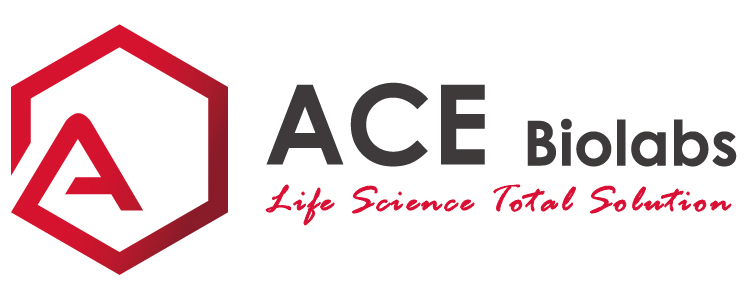
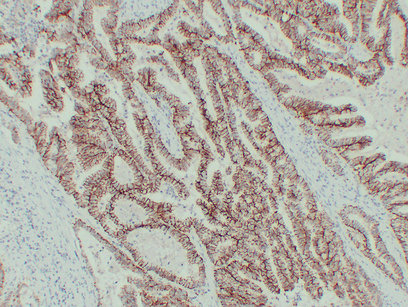
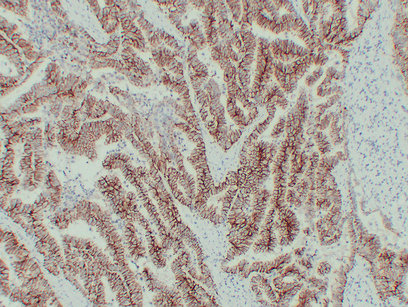
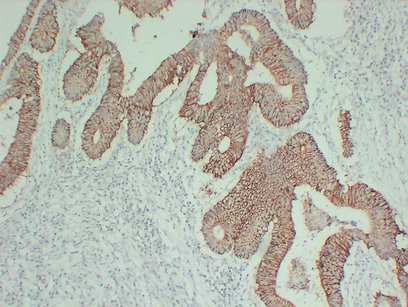
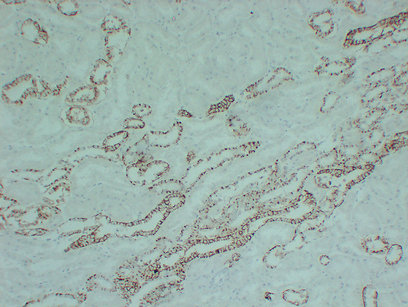





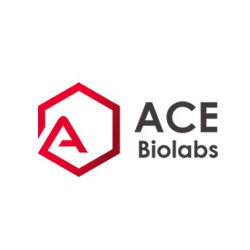


.png)